

Pathfinder Multifamily Opportunity Fund IX, L.P.
$49,250,000 IN
2 PROPERTIES,
Accredited
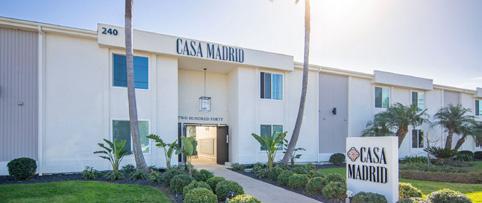


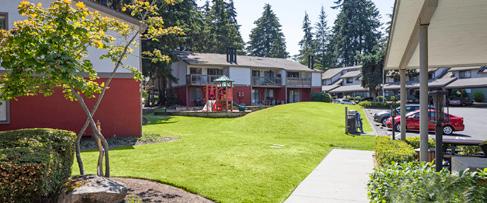

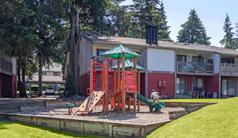
CHARTING THE COURSE
Demographics, High Interest Rates Torpedo Homeownership, Fueling Apartment Demand
By Mitch Siegler, Senior Managing Director

We’ve been talking about the decline in the homeownership rate for some time. The attitudes of many in the millennial and Gen X generations, very different than those of previous generations, had much to do with this. Economics – notably the dramatic rise in home prices the past several years coupled with a doubling in interest rates – have also played a major role.
In response to rising inflation, the Federal Reserve (Fed) began hiking interest rates in the spring of 2022 and continued to raise rates in 2023. The Fed’s 2022-2023 moves boosted interest rates by five percentage points before the Fed made three cuts in 2024. Rates have held steady since then, despite heavy jawboning by the Trump administration for the Fed to cut.
These interest rate increases have precipitated myriad headwinds for investors in real estate and other markets. Before we dive into real estate, let’s look at the impact of higher interest rates on capital markets generally, starting with the markets for initial public offerings (IPOs) and venture capital (VC).
Initial Public Offering and Venture Capital Markets Are Essentially Closed
Initial Public Offerings (IPOs) and Venture Capital (VC) investing ebb and flow as markets rise and fall. They’re also sensitive to interest rates – when rates rise, investors can earn a reasonable return on treasury bonds, risk-free assets, so they’re less inclined to take big risks on equity investing. That’s a bit what we’ve seen the past few years, and it shows in the data for IPOs and VC investments. We’ll unpack that a bit before delving into the implications of higher interest rates on real estate markets.
The IPO market has essentially collapsed. After peaking at 1,035 in 2021, the number of IPOs shrank 92% to

79 in 2023, before recovering to 159 last year (that’s still 85% off the 2021 peak).
There’s a similar downdraft in VC. Global VC funding also peaked in 2021 with funding of $643 billion. The nadir in this VC funding cycle was also 2023, when investments fell to $105 billion, down 84% from the 2021 peak. Last year saw a solid recovery to $368 billion (which is still down 44% from 2021).
The IPO and VC markets frequently move together since VC firms and investors look to the IPO market for their exits and liquidity. When IPOs grind to a halt, other forms of liquidity, like mergers and acquisitions (M&A), slow as well. When VCs don’t have a clear line of sight on exits for their investments, their level of enthusiasm for making new investments also softens.
Ditto for VC fund investors, who have been loath to write new checks to funds that haven’t made distributions in several years. Stretching out the holding periods for investments generally crimps annual returns. This is a virtuous cycle, with a soft IPO market leading to a weak M&A market, both leading to few full-cycle investments and scant investor distributions. This reduces demand from VC investors in new investments (since their preference is to redeploy distributions back into new funds). So, VC as an asset class takes a hit.
Multifamily Real Estate Transaction Volumes Collapsed, Then Recovered
Real estate values, which move inversely to interest rates, fell during the past few years as rates rose. Multifamily, our sector, saw transactions fall by two-thirds from 2021 to 2023 (from $359 billion to $120 billion) as investors digested the rapid rise in interest rates. Multifamily transaction volumes rebounded 200%+ in 2024 (to $320 billion) and 2025 is forecast to show an 18% improvement (to $375 billion), according to the Mortgage Bankers’ Association. Sounds better than it is: 2025 multifamily transaction volumes will be basically on par with 2021 levels.
In this softer market, it is game over for speculators and weaker buyers sit on the sidelines. Patient owners can wait for a better day. Lenders demand a higher return on their capital, leading them to raise their rates and tighten their lending standards, further reducing the debt which

fuels transaction activity. This has exacerbated the already higher cost debt environment.
To make matters worse, inflation remains sticky, leading property owners to contend with rising costs for labor, materials, construction and insurance. The environment has become increasingly challenging and the typical response of thoughtful and conservative investors on all but a handful of investment opportunities: “pencils down”.
Demand for Rental Housing Remains Solid
Notwithstanding these challenges, the multifamily sector has shown surprising resilience, particularly in growth markets like those where Pathfinder operates.
At first glance, this might seem counterintuitive. Rising rates have sent shockwaves through the debt markets, pressured asset values, and caused many institutional investors to hit the “pause” button. But peel back the onion and you’ll see a powerful dynamic at play: as homeownership has become increasingly unaffordable, more Americans are renting – not so much by choice, but by necessity. That’s true in general and even more in more desirable markets – those characterized by strong population and job growth, where housing prices are generally higher. Here, higher demand translates into rent growth for apartments and high prices for homes. In San Diego and Seattle and, where the median home prices are near seven figures, many working people may live only in apartments as buying a home is impractical.
Changing Demographics and Declining Homeownership
For Americans born in 1940, 92% earned more than their parents at age 30, according to researchers at

Opportunity Insights, an economic policy institute. For those born in 1980, that percentage declined to 50%. This shift has profound implications for confidence in making major life decisions – like marrying, forming a family and purchasing a home – especially in the face of inflation that is outpacing wage growth.
We’ve written at length in these pages about the millennial (ages 30-45) and Gen Z (under age 30) generations valuing mobility, delaying marriage and family formation and having fewer children than earlier generations. Since getting married, forming a family and having kids have been the primary catalysts for buying a home, it’s not surprising that the homeownership rate for these cohorts is much lower than in the past; and these generations now make up more than half of the U.S. population. (Homeownership rates are 51% for millennials and 26% for Gen Zs – compared with 66% for all Americans – down from a peak of 69% in 2004.)

For generations, owning a home epitomized the American dream. About 70% of those born in 1940 became homeowners at some point in their lives. If the homeownership trends of the past 20 years and the current data on the two most recent adult generations hold – and major changes here are highly unlikely –tens of millions more Americans will be renting in the future than in the past. And that’s before we consider the economics of homeownership.
Sticker Shock for Homebuyers
Home prices in the U.S. have jumped 42.6% since 2020, according to government-sponsored lender Freddie Mac. That brought the median U.S. home
price to $410,000 in the second quarter of 2025. But medians and averages don’t really tell the tale. In many Pathfinder markets, the median home price is more than double the national level. That puts the cost of a home beyond the grasp of many people, but especially so for starter homes, where most of us first began to accumulate wealth.
But it’s not just high purchase prices. The average 30-year mortgage rate more than doubled – from about 3.00% in the spring of 2022 to around 6.75% in 2024 and 2025. Combine higher home prices with higher interest rates and sprinkle in relatively flat real incomes, and you get a recipe for a housing market which is beyond the reach of many Americans. According to the National Association of Realtors, the monthly payment for a median-priced home is over 90% above the level of 2022!
This affordability gap explains much about the strong demand for quality rental housing – especially in fastgrowing markets like Denver, Austin and Salt Lake City. Even Phoenix, long considered a more affordable Sunbelt market – has seen rapidly rising home prices, which drives demand for apartments higher, pushing rents further.
The Investment Opportunity for Apartments Today
It’s easy to get caught up in headlines about Fed policy, tariffs and Big Beautiful Bills. For disciplined, longterm investors (e.g. those who aren’t chasing fads like crypto and meme stocks), multifamily investment fundamentals remain strong. Well located, cashflowing, suburban apartment properties which provide reasonable value for residents continue to be in high demand. A bonus: these properties are older (‘80s-‘90svintage) and often offer additional upside for owners who can add value by investing in renovations and property improvements.
Yes, capitalization rates (“cap” rates are a metric for assessing the return on investment from buying apartment properties) have expanded during the past few years along with rising interest rates. During this time, Pathfinder has been patiently waiting on the sidelines while many over-leveraged owners who overpaid at the peak of the market in 2022 struggle with low rent growth and rising expenses. And it’s worse than that for these owners, who used expensive, three-year, floating-rate debt to finance their purchases and can’t refinance today.

About $600 billion of multifamily loans mature in 20252026 – most are these three-year, floating-rate loans that simply can’t be refinanced. Those property owners will be forced to sell – generally at around $.75 on the dollar of their 2022 purchase price. We launched Pathfinder Opportunity Fund IX in the spring of 2024 to take advantage of that – and we’re excited about our first two acquisitions and our third property – scheduled to close next month.
So, we’re now seeing more attractive buying opportunities which should continue for the next couple of years. That’s because today’s winning buyers are – like us –well capitalized, solid operators who underwrite sensibly and have strong lender relationships. The current environment plays to these strengths.
We continue to target properties with in-place cash flow, upside from value-add initiatives, and strong demand drivers – like diversified economies with strong service sectors (technology, finance, health care), good schools, and proximity to shopping and amenities. And while we’re still underwriting conservatively, the numbers are once again beginning to pencil.
Strong Demand, Sure but What About Supply?
When interest rates were still uber-low in 2021-early 2022, developers borrowed heavily to build new projects.
Most of those projects have been delivered; the last few are being completed over the next few quarters. By next year, most of those developments will be a memory and it won’t make sense to start anything new (and very little has been started for the past couple of years already.)
Housing – especially workforce housing – remains significantly underbuilt. It’s not getting any easier to find vacant land, secure permits, obtain bank financing and create more housing. And if a developer finds a fantastic site, has the patience for a multi-year permitting process and can find a willing lender, he’s probably not going to like the look of his pro forma – with higher interest rates, construction costs and expenses today and scant rent growth the past couple of years.
These demographic and economic forces – the high cost of homeownership and the low level of enthusiasm for taking the home-buying plunge – are powerful, and they won’t change anytime soon. That’s why we believe apartments, especially in supply-constrained and highgrowth submarkets, should remain a cornerstone of a well-balanced and diversified investment portfolio.
Mitch Siegler is Senior Managing Director of Pathfinder Partners. Prior to co-founding Pathfinder in 2006, Mitch founded and served as CEO of several companies and was a partner with an investment banking and venture capital firm. He can be reached at msiegler@pathfinderfunds.com

FINDING YOUR PATH A Few Tips for Enhancing Investing Outcomes in Different
Real Estate Cycles
By Lorne Polger, Senior Managing Director

Real estate has always been one of the most reliable asset classes for building longterm wealth. If you have been around real estate long enough (I’m approaching the 40-year mark now), you know one thing for certain: markets move in cycles. There are highs and lows, and how you invest at each stage can make a significant difference in your returns. But here’s the good news; if you understand the phases of real estate cycles, you can position yourself to succeed –no matter where the market is headed.
The Four Phases of the Real Estate Cycle
Real estate cycles follow four distinct phases, each driven by shifts in supply, demand, and macroeconomic conditions:
Recovery. The recovery phase is at the bottom of the trough when excess construction/new supply from the previous cycle slows down. Recovery is characterized by low demand, high vacancies, and flat or declining rents. Values are often below replacement cost, creating opportunities for savvy investors to buy properties at a significant discount. Indicators include slow job growth, limited new construction, and investor pessimism.
Expansion. The market improves during the expansion phase. Looking at the broader economy, GDP (economic growth) is rising, job growth is strong, and unemployment is low. Supply and demand are in equilibrium. Demand increases, vacancies drop, and rents begin to rise. Developers, investors, and lenders become more active as confidence returns. New construction starts increase. Indicators include strong economic growth, rising employment, and increased lending activity.
Oversupply. Overbuilding and/or reduced demand

create oversupply. Often, an economic shift is the culprit in the disruption of the supply-demand equilibrium. New construction floods the market, outpacing demand. Vacancies rise, rent growth slows, concessions increase and pricing peaks. Indicators include overbuilding, aggressive lending, and recordhigh asset valuations. In many markets, the multifamily sector has been in this phase for the past 12-24 months; as that new supply continues to get absorbed, we will move into the recovery phase. It is our belief that some multifamily markets are still in the oversupply phase with deliveries peaking in 2026, while others have shifted into the recovery phase.
Recession. In this phase, supply outweighs demand, economic conditions are soft, vacancy rates are high and rent levels are down. Oversupply and weakening demand lead to falling rents and property values. Distress increases as overleveraged owners are forced to sell or are foreclosed on. Indicators include high vacancies, declining property performance, and tighter credit conditions.
How the Real Estate Cycle Impacts Different Asset Classes.
Cycles affect each real estate asset class differently. Industrial, retail and office can be more sensitive to macroeconomic conditions.
• Multifamily: People need a place to live regardless of economic conditions, so economic volatility often does not have a major impact. During economic expansions, however, job growth may cause rents and occupancies to rise, which usually leads to more construction starts. This has characterized the last few years.
• Industrial: Warehouses and distribution centers are more resilient during economic downturns given consistent demand for e-commerce and logistics services. Economic expansion can create strong demand for space and drive-up rents and occupancies, causing construction to increase.
• Retail: Retail continues to evolve as the consumer balances the convenience of e-commerce and the experience of brick-and-mortar stores, That said, retail remains highly correlated with consumer spending and other macroeconomic trends –there’s strong demand for goods during economic expansion when job growth, wage growth and consumer confidence are high and less demand when the consumer’s pocketbook is crimped.
• Office: Demand for office space generally expands when the economy is strong and wanes during economic decline. However, since Covid, hybrid work is causing the supply-demand equilibrium to shift. Newly constructed, well amenitized office buildings are winning new occupants in today’s market, often at the expense of older Class-B and Class-C office buildings.
Strategic Investing by Phase
Recovery. Focus on acquiring undervalued properties and distressed assets. Target markets with strong fundamentals and potential for future job and population growth. Traditional financing may be more limited, so strong relationships with lenders and creative deal structures are important.
Expansion. Hold and improve existing assets as rents and values climb. Development and value-add projects can deliver strong returns in this phase. Secure long-term financing while interest rates are favorable.
Oversupply. Consider selling non-core assets and taking chips off the table. Focus on defensive assets with strong tenant bases. Avoid speculative development as risks of oversupply increase.
Recession. Preserve cash and focus on operations to weather market downturns. Look for opportunities to acquire distressed properties from motivated sellers and lenders. Invest with experienced operators who can stabilize struggling assets.

Where Are We Now?
Right now, the U.S. real estate market is in a late-cycle transition, from oversupply to recovery. Here is what we are seeing:
• Vacancy rates are up, especially in sectors with heavy new supply like multifamily and industrial.
• Multifamily rent growth has slowed sharply from the record highs of 2021–2022, and in some markets, rents are flat or falling.
• Interest rates remain elevated, which is keeping transaction volumes low and putting pressure on highly leveraged owners.
• Distress is building – more owners are facing refinancing challenges as debt costs remain elevated.
For multifamily investors, occupancy, rent growth/ decline, property valuations and supply-demand equilibrium assess the phase we are in. We believe multifamily has recently entered the recovery phase of the cycle in certain markets. More will follow over the next 12-18 months. Investors like Pathfinder – those with experience, cash and patience – should find more opportunities later this year and in 2026, especially if interest rates remain at or near current levels.
Why Timing Matters
Missing the cycle’s turning points can have major consequences. Buying aggressively at the peak (oversupply phase) often leads to diminished returns or losses. Conversely, investors who take calculated risks during downturns often realize the largest gains. While perfect timing is impossible, we try to focus on positioning our portfolio for resilience across cycles by adopting these

1. Maintain conservative leverage.
2. Selectively and thoughtfully pick your geographies and target markets with strong growth dynamics.
3. Hold ample cash reserves for unexpected challenges.
Final Thoughts
Understanding real estate cycles is not about predicting the exact top or bottom. It is about recognizing the environment you operate in and making decisions that balance opportunity with risk. By aligning your investment strategy with the broader cycle, you can
maximize returns and build a resilient portfolio that thrives through market shifts.
Real estate cycles are inevitable, but they do not have to be scary. When you know where we are in the cycle, you can make smarter decisions – whether that’s buying, holding, improving, or selling. The key? Stay patient, stay flexible, and do not get swept up in the crowd. That is how the best investors win in real estate – cycle after cycle.
Lorne Polger is Senior Managing Director of Pathfinder Partners. Prior to co-founding Pathfinder in 2006, Lorne was a partner with a leading San Diego law firm, where he headed the Real Estate, Land Use and Environmental Law group. He can be reached at lpolger@pathfinderfunds.com

GUEST FEATURE The Power of Retention
By Brent Rivard, Managing Director

The Pathfinder team got together last month at a fun venue for a company event. We rented out a couple of golf/sport simulator bays and engaged in some friendly, but competitive, competition. Yes, a couple of our team members brought their own golf clubs and allegedly took a lesson before the event. No, it didn’t seem to make a difference!
As our team spent the afternoon together swinging golf clubs, kicking soccer balls and laughing, I started to reflect on how long we had all been together. We’ve been fortunate to have almost zero turnover at Pathfinder. Most of our team has been working together for over ten years or more. It took some time to find the right people but once we did, our leadership team knew it was important to keep the team together for the long term. The cost of turnover is high – not just for our company but for our properties and our investors – so we’ve tried to create a culture and company that people want to stay a part of. We’ve achieved this not just by holding fun company events, but treating our team with respect, giving them the resources they need to succeed and creating financial incentives that create an ownership mentality.
We’ve applied this same philosophy to our apartment properties. The acquisition cost of a new tenant is high. It’s not just the marketing costs and time spent by the manager on tours, applications and lease signing. Finding a new tenant means we lost an old one. That turnover is costly. Industry research estimates that the cost to replace a single tenant can range from 50% to 150% of that tenant’s monthly rent. Why so high? Because turnover isn’t just about finding someone new. It involves cleaning, repairs, marketing, manager time, losing rent from downtime on a unit and sometimes offering concessions to attract new tenants. It’s also not just about the measurable cost. High turnover can make your apartment building look transient or lead to a negative online reputation. That could hurt the process of finding new tenants, making the overall cost even higher.

Turnover in the apartment business is generally high with national averages hovering around 50%. If an apartment owner increases tenant retention and beats the national average and the competition at reducing turnover, they can positively impact net operating income and investor returns. Happy and engaged tenants tend to stay in their apartments longer and avoid moving across the street. Here are some examples of what apartment owners can do to increase tenant retention:
• Organizing Community Events: Building community can look different depending on the size of the property, the type of property (garden style vs. mid-rise), tenant demographics and many other factors. Management teams organize summer barbecues, food truck events, holiday parties and game nights to build community. These events help tenants get to know each other and create a sense of belonging.
• Personal Touches for Tenants: Small gestures can go a long way. Sending birthday cards, recognizing milestones, or creating a “tenant of the month” program can help tenants feel appreciated and more part of the community.
• Open Communication and Solid Customer Service: When tenants feel heard, they’re more likely to remain loyal. Managers that make it easy for tenants to reach out with concerns and respond promptly tend to have higher retention. One of the biggest impacts we have seen is having a solid maintenance team. A quick fix on a maintenance issue often turns a tenant that might have complained into a raving fan.
• Family Atmosphere and Amenities: We try to encourage a culture where neighbors look out for each other, just like family. Most of our properties

have a clubhouse where tenants can socialize. We also find that many of our tenants have pets that they consider family. We try to make sure that our properties have dedicated spaces such as dog parks for our tenants to spend time with their furry friends.
• Transparency and Honesty: Tenants like to know what is going on and trust is built through honesty. We strive to keep tenants informed about policy changes, rent adjustments, and upcoming projects so they don’t feel like there are any surprises.
There is always going to be turnover that you can’t control. Tenants may move for various reasons such as a new job. We strive to reduce our overall turnover costs by using other tools such as providing referral bonuses to tenants to encourage them to refer their friends. Word of mouth
advertising is generally one of the most powerful tools to attract new customers. At Pathfinder, we understand the cost of finding that next tenant and the benefit from keeping the ones we have. We’re constantly measuring retention and work with our property management teams to implement strategies to retain good tenants so we don’t have to find new ones.
Whatever your business, keeping existing customers is usually preferable to finding replacements.
Brent Rivard is Managing Director and COO of Pathfinder Partners. Prior to joining Pathfinder in 2008, Brent was the President of a national wealth management firm and CFO/COO of one of southern California’s leading privately-held commercial real estate brokerage firms. He can be reached at brivard@pathfinderfunds.com.

ZEITGEIST –SIGN OF THE TIMES
The Latest in Apartment Tech
Enhancing the resident experience is a key differentiator for multifamily property owners and at the integration of smart technologies which simplify residents’ daily lives is key to keeping apartment residents satisfied. The most popular technologies include mobile and video-based building access controls, PIN-operated smart locks, secure package lockers with text alerts, pre-installed high-speed internet and app-controlled thermostats. Properties that incorporate these amenities often command premium rents. These systems are generally simple and scalable, reducing the burden on staff and elevating the level of service and security.
Technology also personalizes the resident journey before a lease is signed. Digital platforms enable prospective renters to take virtual tours, allow many questions to be answered in real-time by A.I.-trained chatbots and schedule inperson tours – all without the need to coordinate with staff. The leasing process has gone digital as well, with tenant screening and lease execution systems fully accessible online. Once a lease is signed, the experience continues through online portals that allow residents to pay their rent, submit their maintenance requests and communicate directly with property management.
As resident expectations evolve, properties that thoughtfully incorporate technology are better positioned for success. Technology-enabled leasing and property management teams can be more responsive and can make better decisions. Using technology can enhance the resident experience, which can reduce turnover, increase operational efficiencies and support stronger rent growth – all of which contribute to longterm asset performance and value.
Renting for Longer: The New Normal
High mortgage rates coupled with elevated home prices have created a growing class of renters by necessity.

Unlike renters by choice – who prefer the flexibility –these households are locked out by economic forces and would prefer homeownership.
According to the National Association of Realtors , the median monthly mortgage payment for a typical homebuyer has doubled since 2020, and Redfin recently reported that only 16% of homes for sale in the U.S. are considered affordable to the average local household. As a result, more households are forced to embrace long-term renting and are not saving for a future home purchase down payment. Data from the Harvard Joint Center for Housing Studies shows that 22 million renter households have now been renting for more than five years – a 20% increase over the past decade.
As more residents embrace long-term renting, owners are investing in upgraded amenities and resident services. Enhancements like modern fitness centers, coworking lounges and hospitality-style services are becoming standard as communities adapt to meet the expectations of a more permanent renter base.
For investors, the emergence of a “rent-for-longer” demographic offers compelling tailwinds. Demand is less cyclical and more durable, particularly in workforce housing and suburban markets where monthly rents remain significantly below the cost of homeownership. As homeownership remains out of reach for many, high-quality rentals have become a long-term housing solution.

TRAILBLAZING: THE RANCH, SAN DIEGO, CA
“The
Transformation of a Neighborhood, from Overlooked to In-Demand”
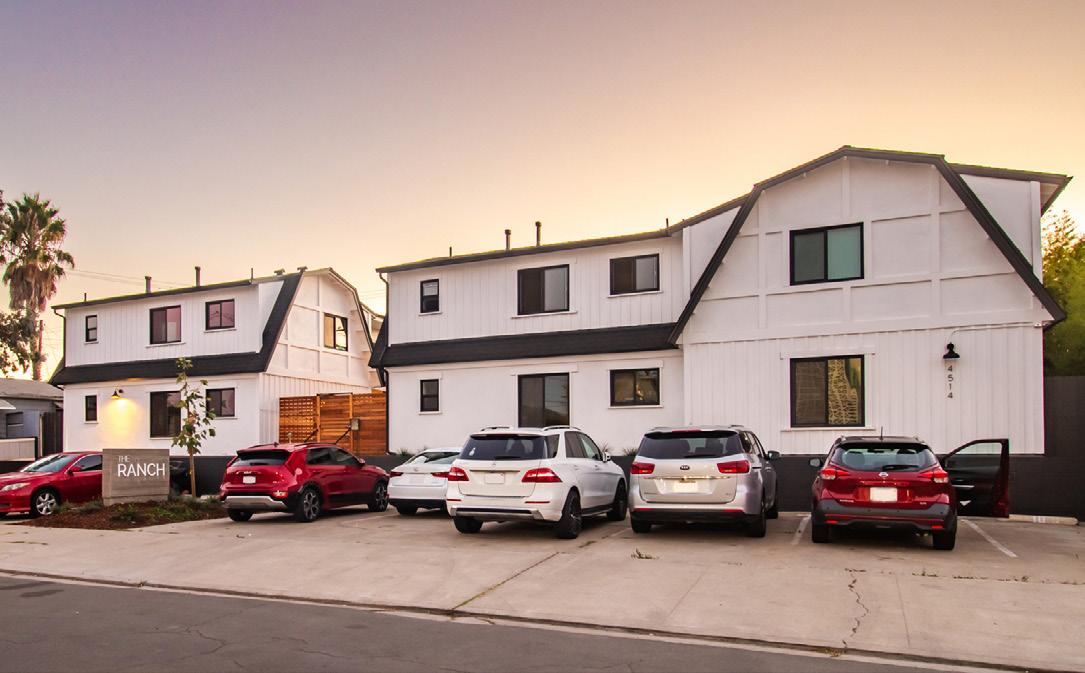
Normal Heights, tucked between the established San Diego areas of North Park and Kensington, was historically overshadowed by its better-known neighbors. But in recent years, the area has evolved into a popular and eclectic neighborhood, celebrated for its walkability, Craftsman-style bungalows and the vibrant Adams Avenue corridor – a longtime haven for artists, musicians and independent business owners. In recent years, the neighborhood has attracted young professionals drawn to its unique blend of urban energy, residential charm and central location just five miles from Downtown San Diego and six miles from the Pacific Ocean.
Millennials – now ages 29 to 44 and the largest group of U.S. renters – are increasingly drawn to vibrant, amenitized neighborhoods like Normal Heights that offer cultural appeal at a better value than found in coastal or downtown areas. Nearly 60% of renters in the neighborhood are between 25 and 44 years old and average rents are approximately 25% below comparable coastal neighborhoods. The area features more than

50 bars, cafés and restaurants, five parks and access to several canyon trails – delivering a rich lifestyle experience at a more affordable price point.
In 2021, Pathfinder purchased The Ranch, an 18-unit apartment community in Normal Heights, just two blocks from the shops and cafes on Adams Avenue. The property, built in 1970, offers a mix of one- and twobedroom apartments ranging from 580 to 770 square feet and all bottom floor units feature private patios. The community has farmhouse-style architecture, an open courtyard, a laundry room and 18 parking spaces.
At the time of acquisition, the property had not been updated in over 50 years, offering an opportunity for improvement. Our business plan included renovating the exterior, modernizing the unit interiors and adding a new community barbeque gathering area. We also planned to add two studio apartments – increasing the unit count from 18 to 20 apartments – by converting a two-car garage and two carports into residential space.


Since acquiring the property, we’ve completed a modernfarmhouse style exterior renovation including new windows, roofs, exterior paint, landscaping, lighting, entryway, fencing, signage, and a community BBQ gathering area. We renovated all unit interiors with new hard-surface flooring, upgraded kitchens and baths and installed in-unit washer and dryers and are under construction on the two
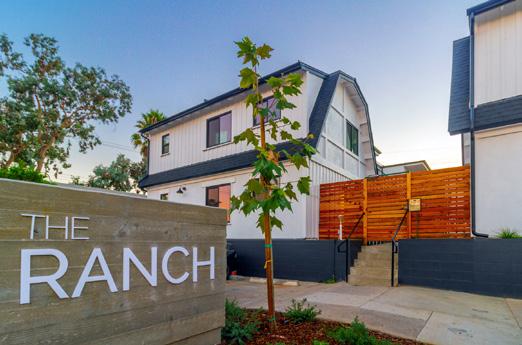
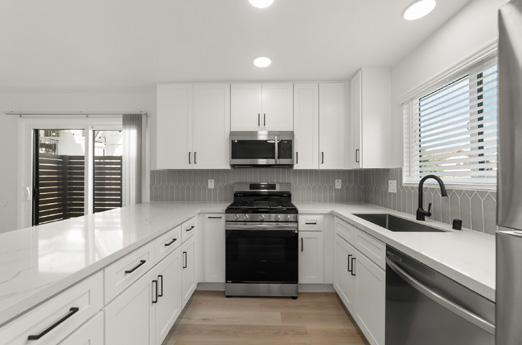
new studio apartments, with completion scheduled for later this year.
We’re thrilled with the property’s transformation and believe our improvements at The Ranch are a fitting reflection of where Normal Heights is headed – rooted in historic charm but reimagined for the next generation of San Diego renters.

Before and After – Exterior Facade at The Ranch
Before and After – Kitchen at The Ranch
Normal Heights: Did you know?
• Origin of the Name: Normal Heights was named after the San Diego Normal School, a teacher-training college that eventually became San Diego State University.
• One of San Diego’s Most Walkable Neighborhoods: With a Walk Score of 86, Normal Heights ranks among the most walkable neighborhoods in San Diego. Its grid layout, bike-friendly streets, and proximity to transit make it appealing to car-free residents.
• Historic Streetcar Suburb: Normal Heights was shaped by San Diego’s historic streetcar system, which once ran along Adams Avenue and helped establish the walkable, transit-friendly character the neighborhood still enjoys today.
• Adam’s Avenue Street Fair: Each fall, the Adams Avenue Street Fair brings more than 100,000

visitors to the heart of Normal Heights, with 75 live musical acts, seven stages, and 300 local vendors spread across a 10 block corridor.
• Burritos Always Nearby: It’s a running local joke that you’re always within a short walking distance of a burrito joint and The Ranch has nine Mexican restaurants within a half-mile radius.

NOTABLES AND QUOTABLES
“Trust”
“If people like you, they’ll listen to you. But if they trust you, they’ll do business with you.”
- Zig Ziglar, American Author
“Trust is earned when actions meet words.”
- Chris Butler, English Writer and Director
“Trust is built on telling the truth, not telling people what they want to hear.”
- Simon Sinek, American Author
“It takes 20 years to build a reputation and five minutes to ruin it. If you think about that, you’ll do things differently.”
- Warren Buffett, Chairman and CEO, Berkshire Hathaway
“Trust is built with consistency.”
- Lincoln Chafee, U.S. Senator and Business Leader
“

“
“Without trust, we don’t truly collaborate; we merely coordinate or, at best, cooperate. It is trust that transforms a group of people into a team.”
- Stephen M.R. Covey, American Author
“You must trust and believe in people, or life becomes impossible.”
- Anton Chekhov, Russian playwright
“Earn trust, then you can worry about the rest.”
- Seth Godin, American Author
“When the trust account is high, communication is easy, instant and effective.”
- Jack Welch, Former CEO of General Electric
“It is mutual trust, even more than mutual interest, that holds human associations together.”
- H. L. Mencken, American Journalist
IMPORTANT DISCLOSURES
Copyright 2025, Pathfinder Partners, L.P. (“Pathfinder”). All rights reserved. This report is prepared for the use of Pathfinder’s clients and business partners and subscribers to this report and may not be redistributed, retransmitted or disclosed, in whole or in part, or in any form or manner, without our written consent.
The information contained within this newsletter is not a solicitation or offer, or recommendation to acquire or dispose of any investment or to engage in any other transaction. Pathfinder does not render or offer to render personal investment advice through our newsletter. Information contained herein is opinion-based reflecting the judgments and observations of Pathfinder personnel and guest authors. Our opinions should be taken in context and not considered the sole or primary source of information.
Materials prepared by Pathfinder research personnel are based on public information. The information herein was obtained from various sources. Pathfinder does not guarantee the accuracy of the information. All opinions, projections and estimates constitute the judgment of the authors as of the date of the report and are subject to change without notice.
This newsletter is not intended and should not be construed as personalized investment advice. Neither Pathfinder nor any of its directors, officers, employees or consultants accepts any liability whatsoever for any direct, indirect or consequential damages or losses arising from any use of this report or its contents.
Do not assume that future performance of any specific investment or investment strategy (including the investments and/or investment strategies recommended or undertaken by Pathfinder) made reference to directly or indirectly by Pathfinder in this newsletter, or indirectly via a link to an unaffiliated third-party web site, will be profitable or equal past performance level(s).
Investing involves risk of loss and you should be prepared to bear investment loss, including loss of original investment. Real estate investments are subject to the risks generally inherent to the ownership of real property and loans, including: uncertainty of cash flow to meet fixed and other obligations; uncertainty in capital markets as it relates to both procurements of equity and debt; adverse changes in local market conditions, population trends, neighborhood values, community conditions, general economic conditions, local employment conditions, interest rates, and real estate tax rates; changes in fiscal policies; changes in applicable laws and regulations (including tax laws); uninsured losses; delays in foreclosure; borrower bankruptcy and related legal expenses; and other risks that are beyond the control of Pathfinder or the General Partner. There can be no assurance of profitable operations because the cost of owning the properties may exceed the income produced, particularly since certain expenses related to real estate and its ownership, such as property taxes, utility costs, maintenance costs and insurance, tend to increase over time and are largely beyond the control of the owner. Moreover, although insurance is expected to be obtained to cover most casualty losses and general liability arising from the properties, no insurance will be available to cover cash deficits from ongoing operations.
Please add msiegler@pathfinderfunds.com to your address book to ensure you keep receiving our notifications.

